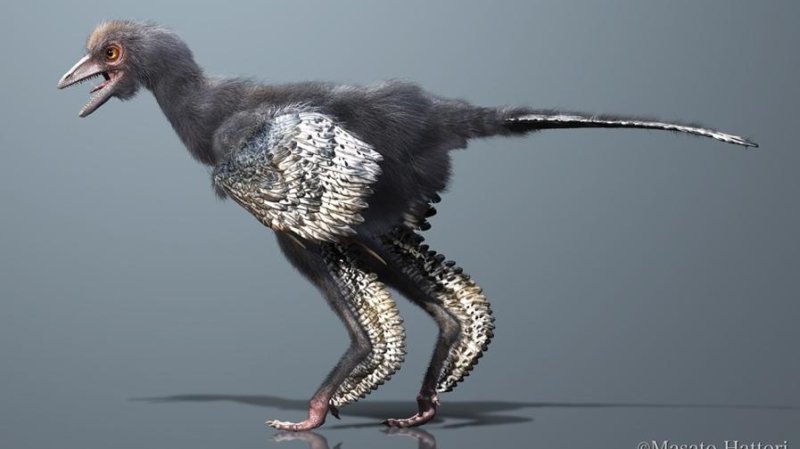1 of 2 | The half-metre tall Aurornis xui, which lived in China 150 million years ago, is believed to be the earliest known member of the bird family tree. (Artist's impression by Masato Hattori)
A fossil dug up by a Chinese farmer was recently identified as what could be the world's oldest bird.
Paleontologist Pascal Godefroit found the specimen, called {iAurornis xui}, in the archives of a museum in Yizhou last year, where it had languished for several years.
The 150-million-year-old fossil is a small four-winged, feathered dinosaur, measuring about half a meter in length.
“In my opinion, it's a bird,” Godefroit told Nature, where his research was published. “But these sorts of hypotheses are very controversial. We’re at the origins of a group. The differences between birds and [nonavian] dinosaurs are very thin.”
Godefroit said the animal belonged to the Avialae group, which includes the evolutionary line leading to modern birds, rather than the non-winged dinosaurs.
Such a discovery is not without controversy: Aurornis probably couldn't fly, but instead used its wings to glide from tree to tree. Still, the feathers on the Chinese fossil are not well-preserved, and thus it is difficult to tell is it might have been capable of flight.
Others still believe the Archaeopteryx holds the distinction as the first bird: Slightly younger than the Aurornis, it is considered the oldest known feathered dinosaur.
“[Aurornis] is very birdlike, but it is not yet a bird,” Paleontologist Luis Chiappe, of the Natural History Museum in Los Angeles, told Science News.
Regardless of whether Aurornis is classified as a bird, it is a “great, interesting specimen that pushes our understanding of the evolution of birds back another 10 million years,” Chiappe said.
But Godefroit points to several features of the skeleton, including the hip bones, which appear very similar to modern birds.







